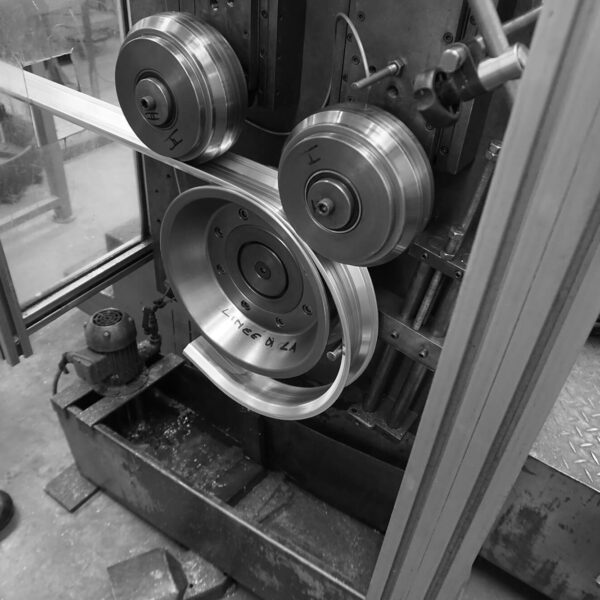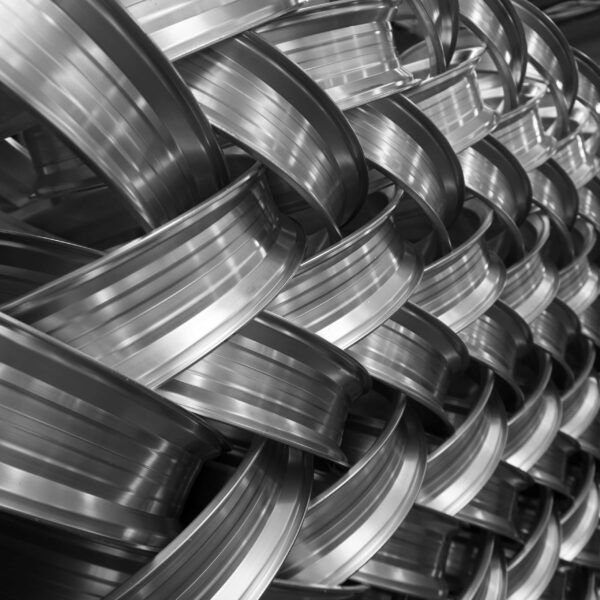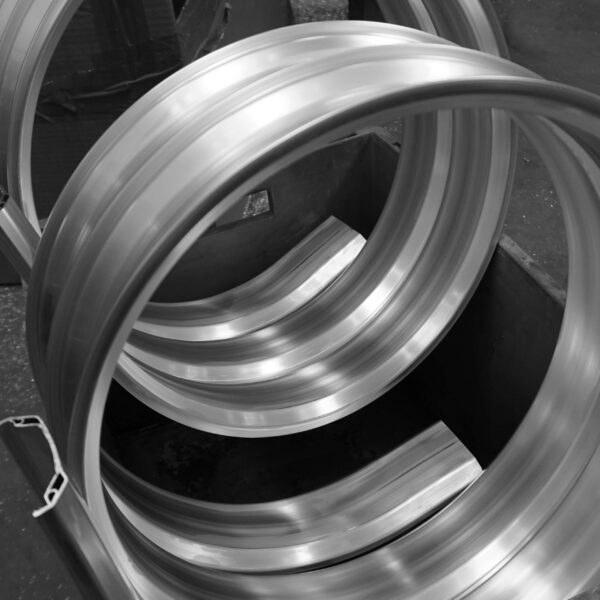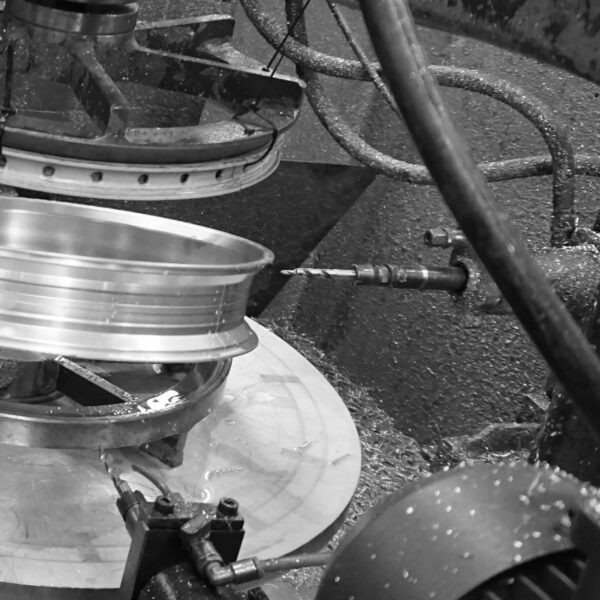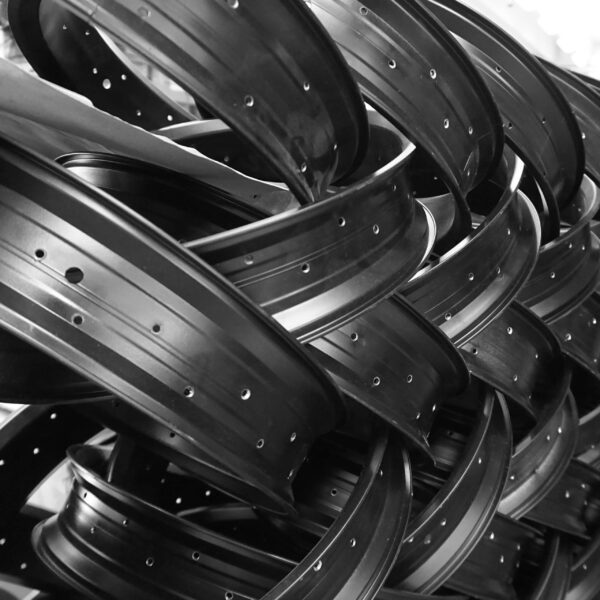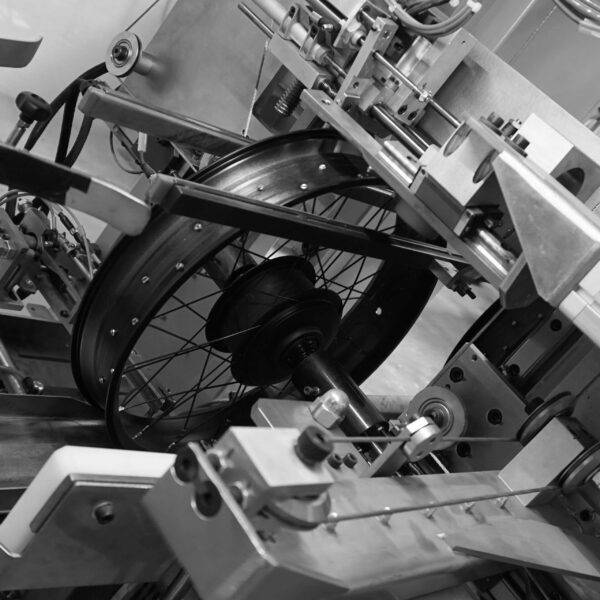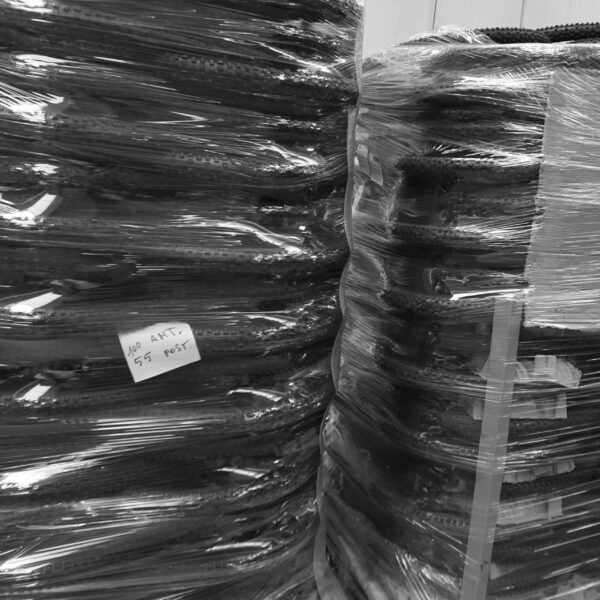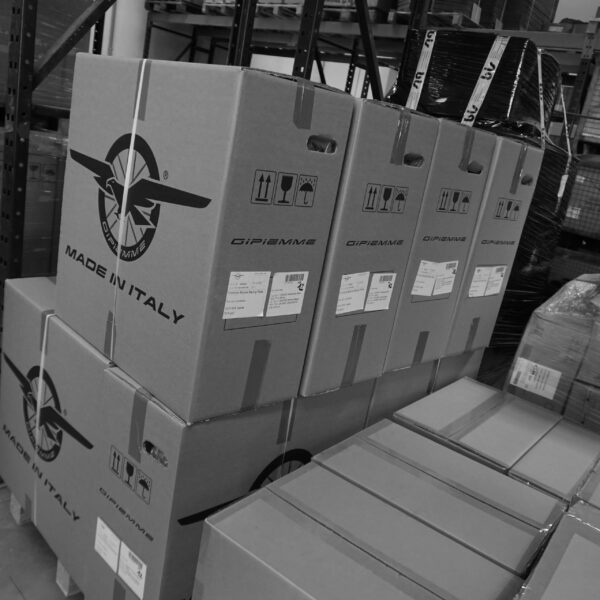Production Made in Italy Gipiemme has been specializing since 1986 in the production of rims and wheels for mountain bikes, road bikes – both professional and non-professional, recreational bicycles, and since 2004, for electric bicycles. Since 1994, it has been manufacturing wheels and rims for wheelchairs for people with disabilities: standard, sports, and electrically assisted. Gipiemme offers a catalog line of rims and wheels but also provides customized products. Customization can involve only the finish or a complete development of profiles, rim, and components. Gipiemme seeks the best materials for the design, development, and production of its products. Research and development are carried out by specialized in-house technicians to ensure an excellent and high-performance product. The extrusions are made with their own dies, leveraging the collaboration of the best companies in Italy. The alloys used are 6060, 6061, 6005, and 6082.
– The profile is precision-calendered to create a spiral. – The spiral is cut into size-specific segments for the required rim diameter. The cutting process creates two or more rims per spiral. – The rims need to be closed, and this operation can be performed with specific spikes called “spiked rims” or welded (in this case, excess material from the welding is then removed for cleaning and milling). – Gipiemme follows the creation of spoke holes, valve holes, and any other holes (in the case of wheelchair rims, handrail holes). The holes can be created through inline, two-dimensional, or three-dimensional drilling (CNC) or punching. The quantity of holes depends on product or customer requirements. Generally, they can be at 16, 20, 24, 28, 32, or 36 spokes. – The process continues with rim cleaning, which can be mechanical (shot peening or sandblasting), chemical, or both mechanical and chemical. – Next comes the finishing treatment. Finishing can involve powder coating, polishing, anodizing, or galvanic anodization. – If a ground braking surface is required, the rim is precisely turned to achieve precise and vibration-free braking. – The rims can then be packed for shipping or proceed to the wheel assembly phase. – In this phase, the hub is applied. The hub is internally designed. Various parts may be outsourced from Italian suppliers and then undergo anodization and assembly. In some cases, the hub may be commissioned to external partners, even non-national, who manufacture it internally. Additionally, we also use hubs provided by customers. – The hub then moves to the spoke threading phase, where spokes of various lengths are threaded. – Next is the lacing phase (manual or semi-automatic). In this operation, the hub with the spokes is attached to the rim using special nuts with bolt-shaped heads called “nipples.” – The wheel is now nearly assembled. The wheel must then be “trued,” meaning the rim must be positioned at the center of the hub spacing, be perfectly round, and not have any raised points. Additionally, the rim must not have any lateral wobbles, and the spokes must maintain uniform tension. Therefore, the “truing” phase is very important for the quality and durability of the wheel. Wheel truing can be manual, assisted by specific computer control, or performed by automatic truing robots. – Finally, any required accessories such as flaps are assembled. At this point, the wheel undergoes inspection and packing for shipment to the customer.
Contattaci per ricevere ulteriori informazioni
Contact us for further information.

